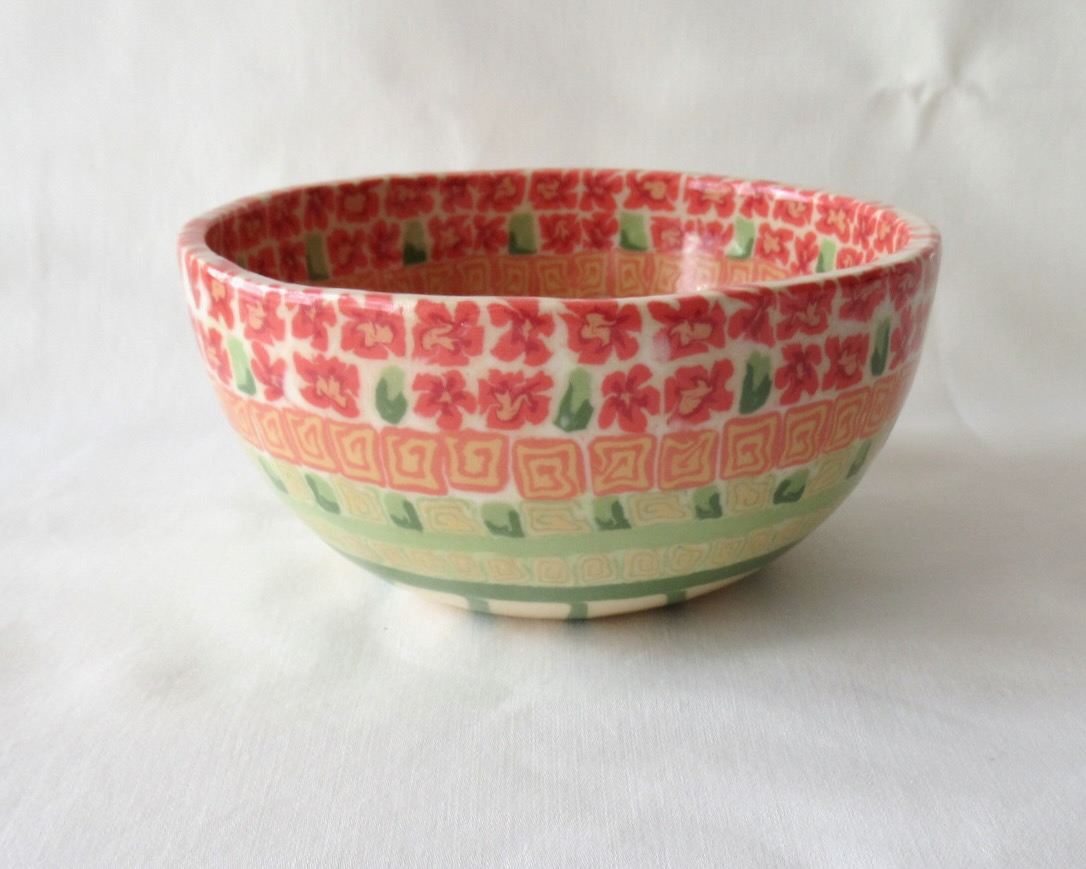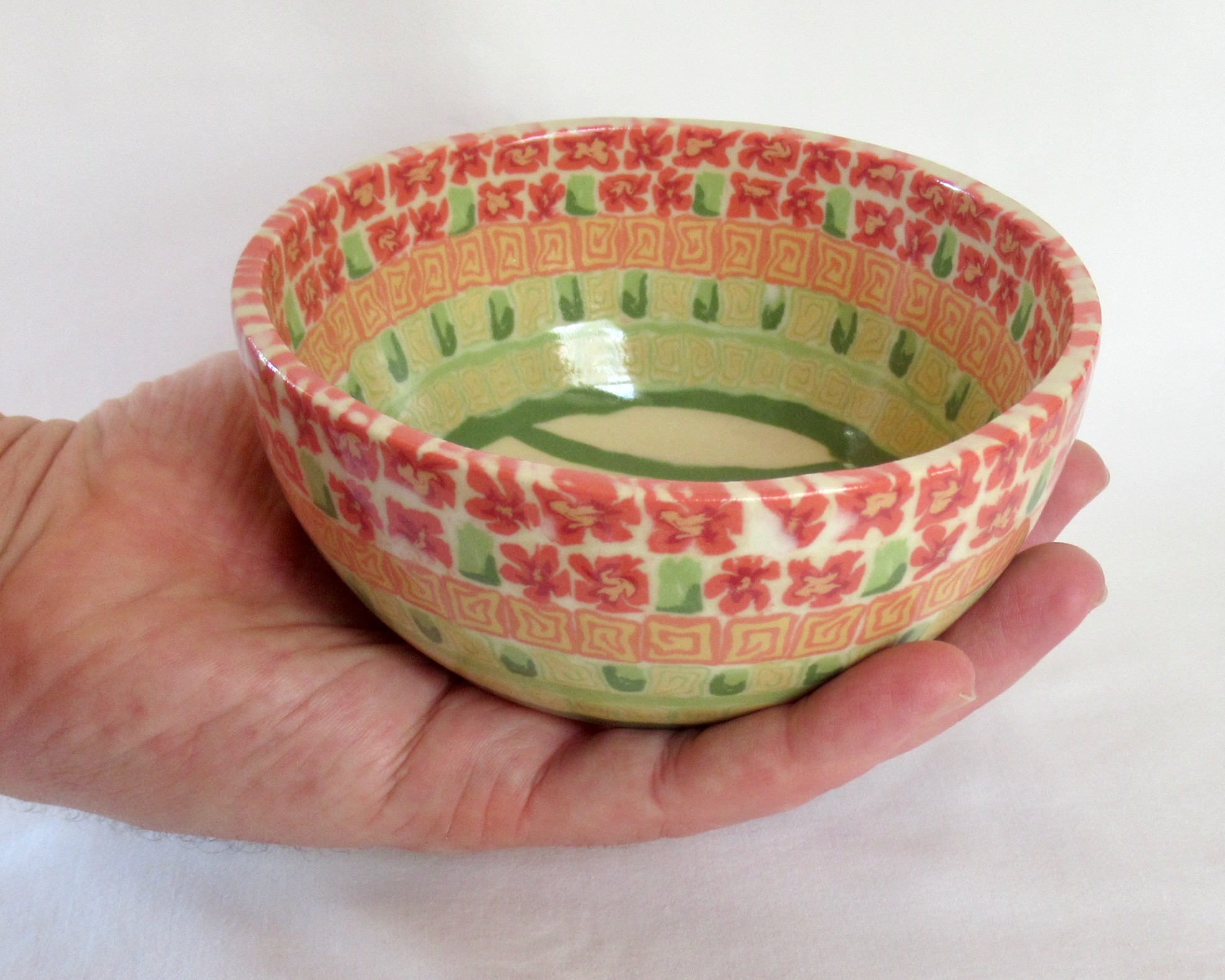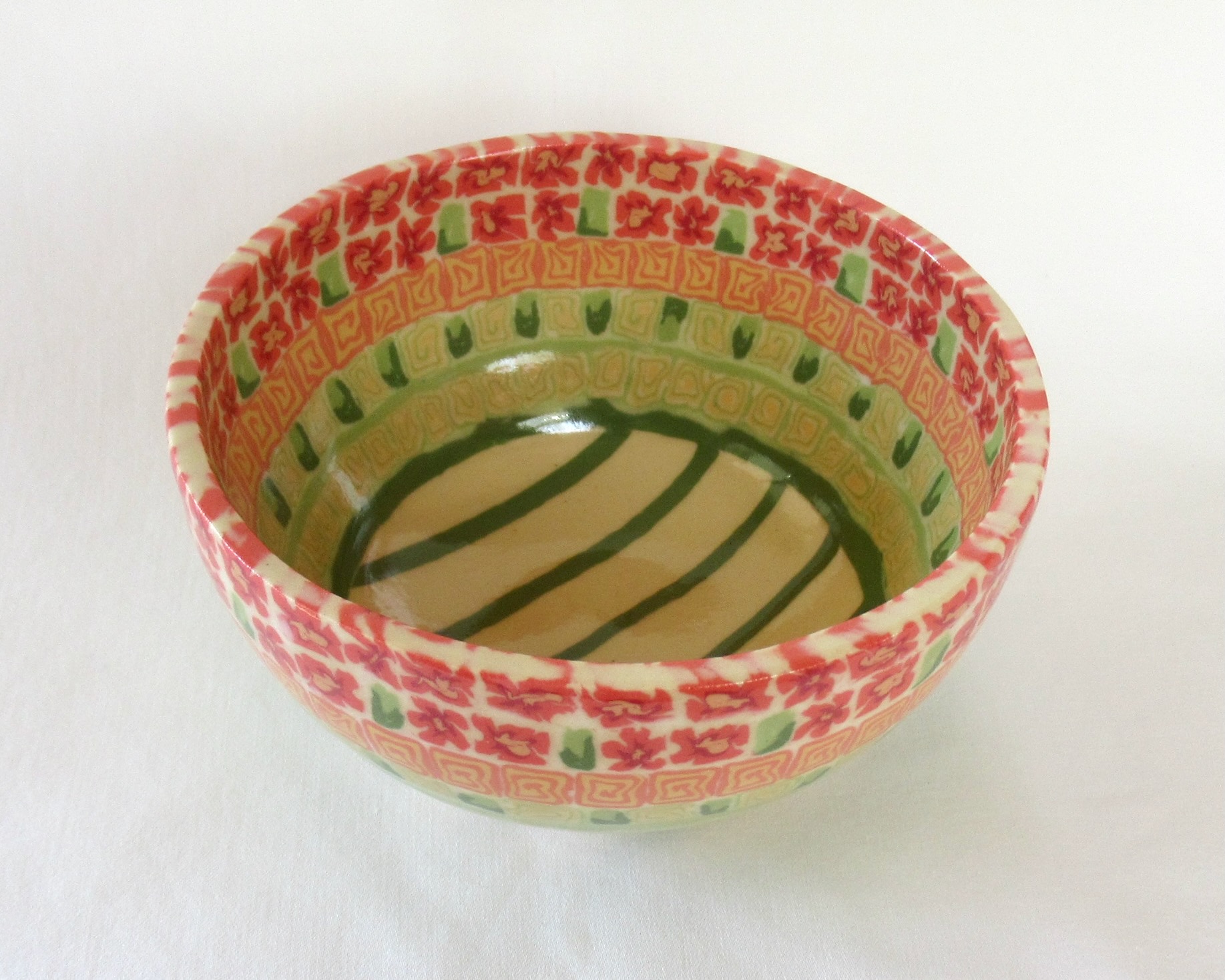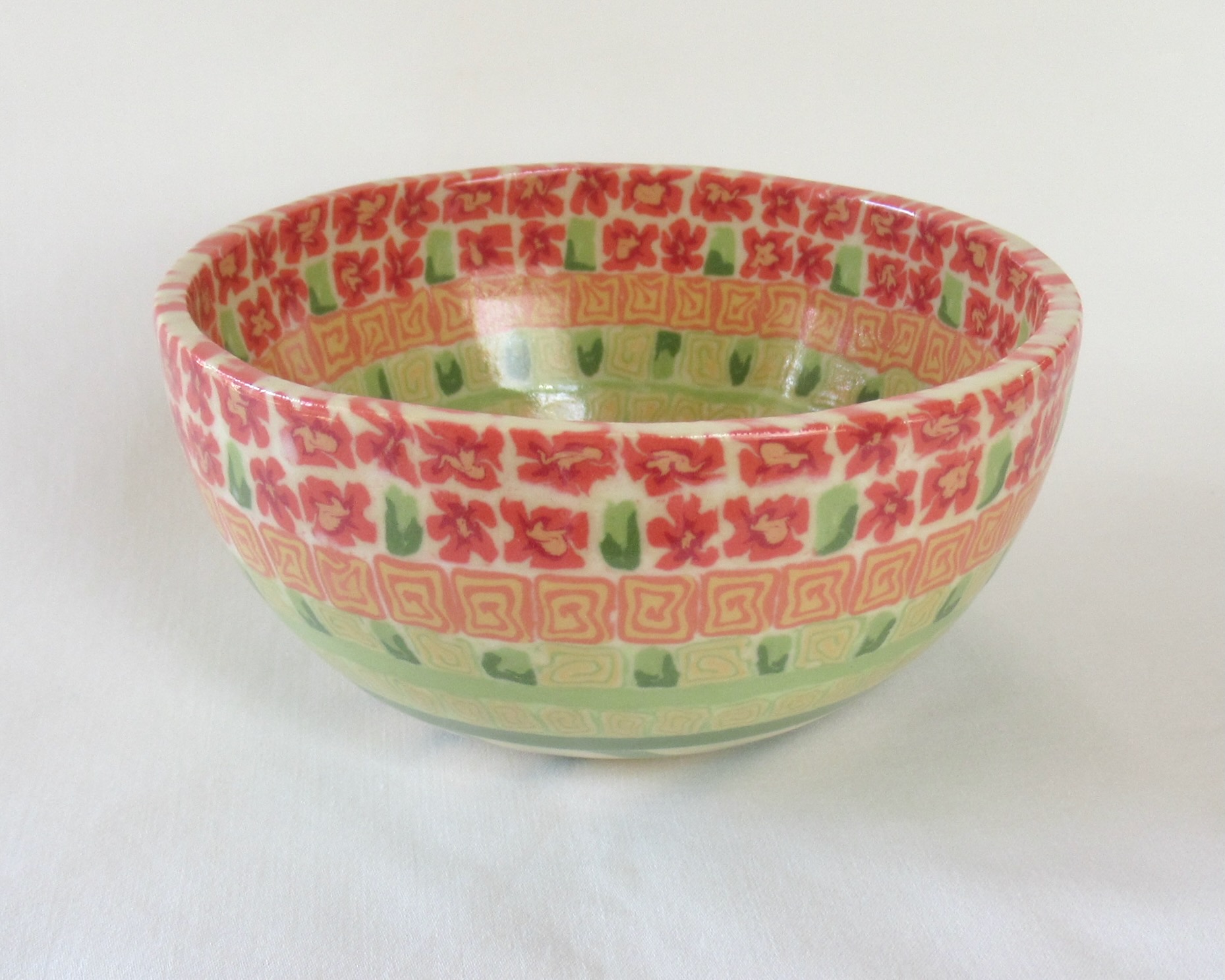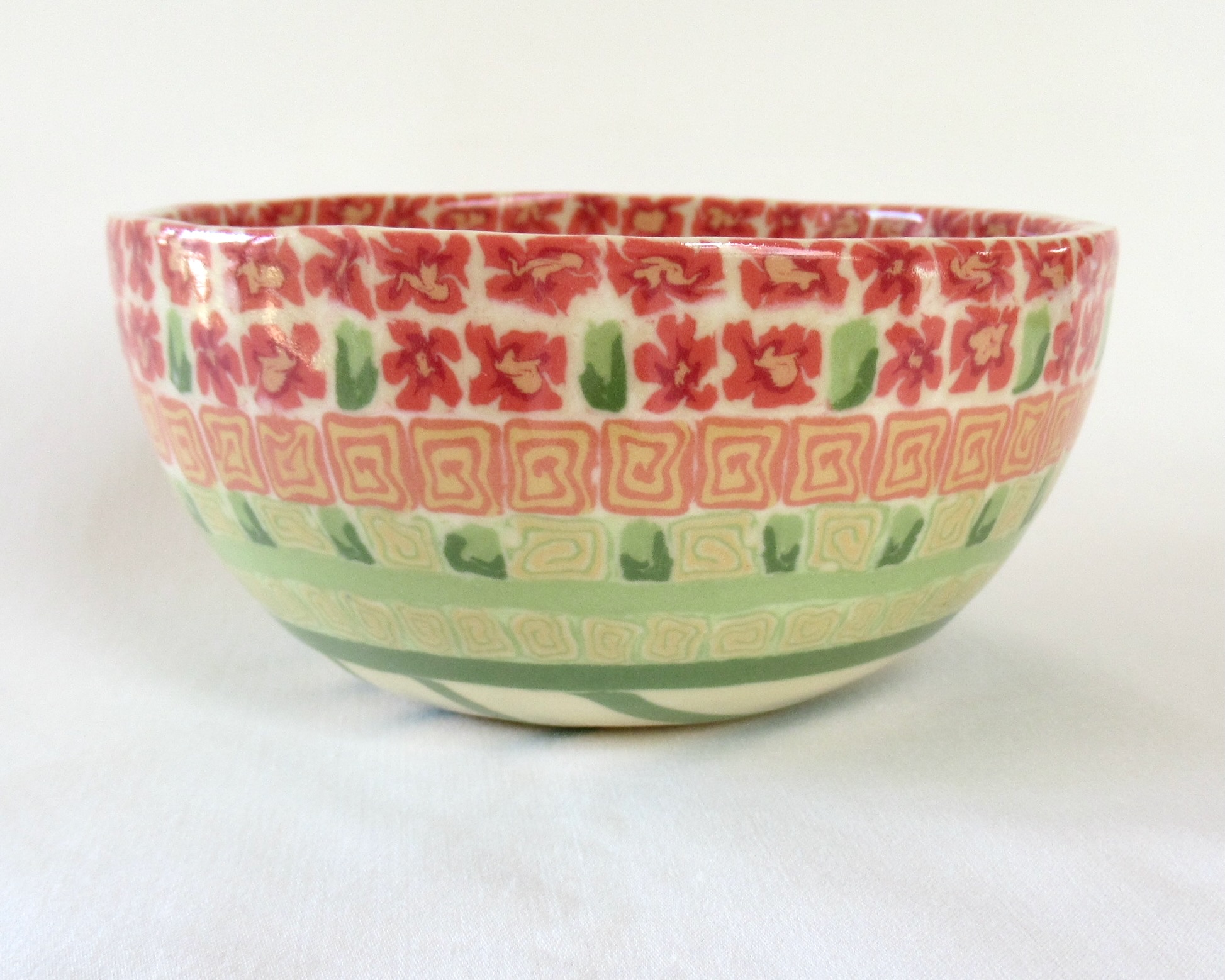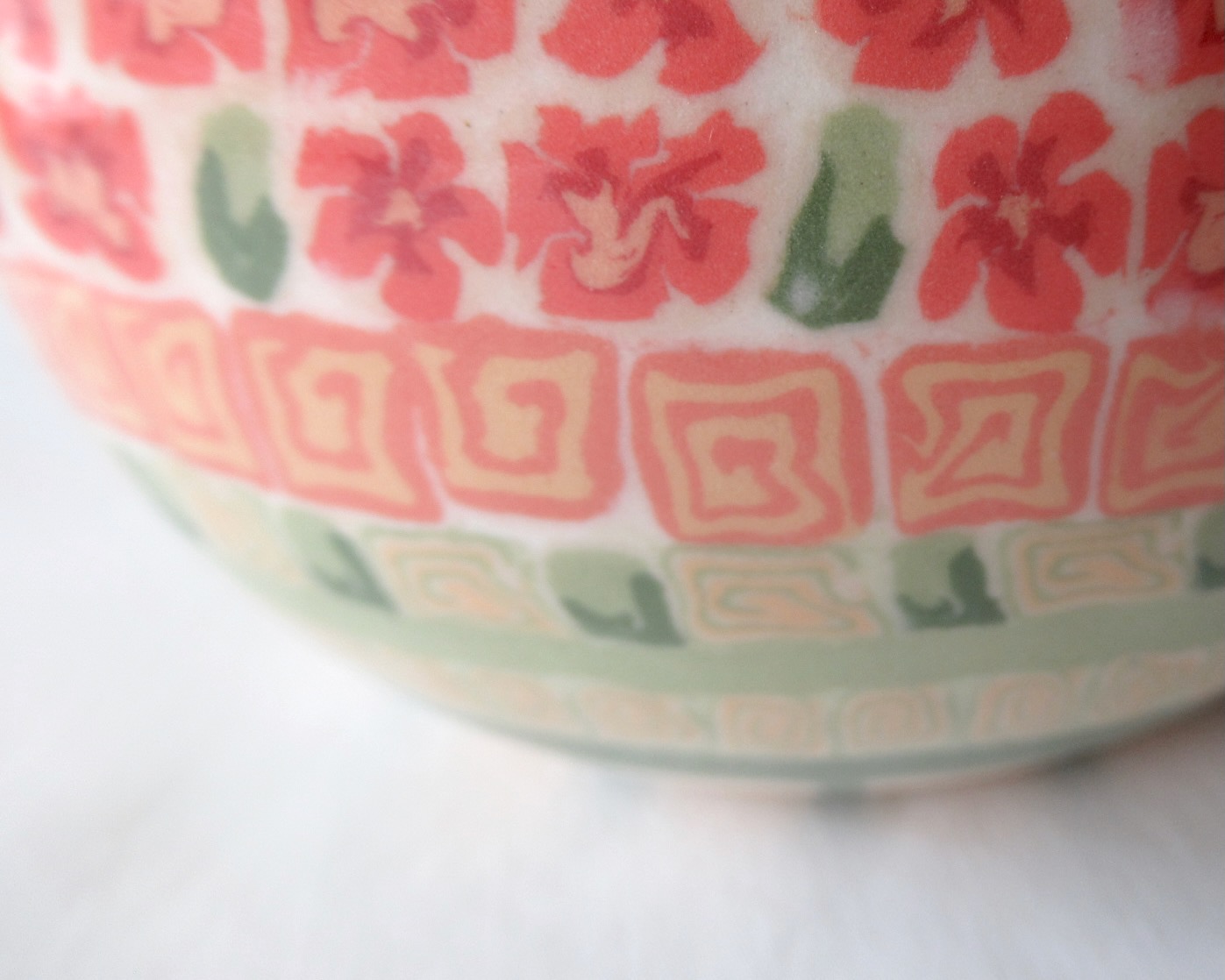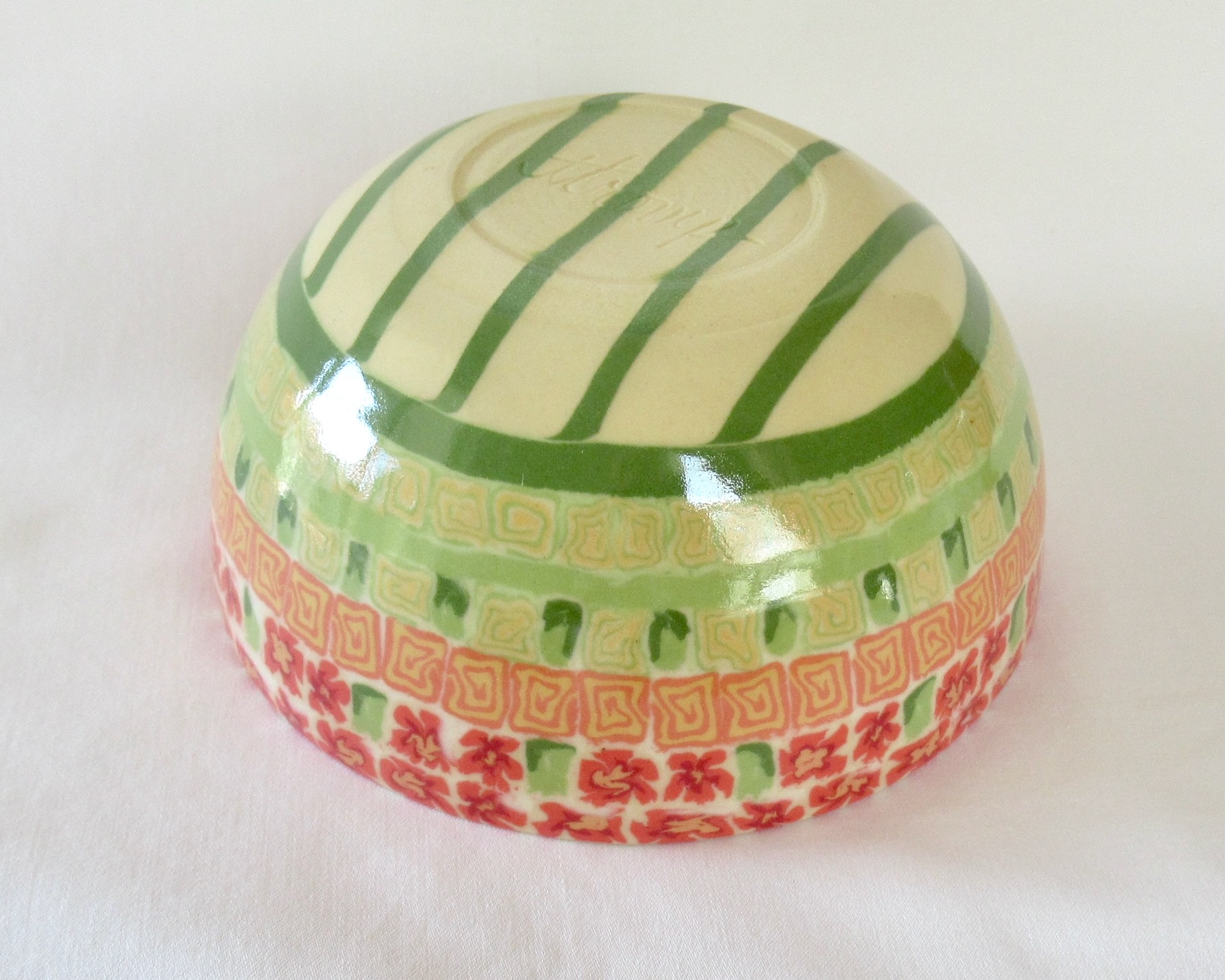About this Product
Nerikomi Small Red Flowers Bowl
Measures: 4-5/8" wide x 2-1/4" high. ( 11.74cm x 5.71cm)
Holds approximately 1-1/2 cup (12 oz.)
Bright colored porcelain clay colors of red, orange, yellow, green and a neutral of ivory.
Ice cream bowl, dessert bowl, salsa bowl.
Decorative Nerikomi bowl.
This bowl was created using a porcelain press mold, which I made myself on the potter's wheel with porcelain clay.
You can read the "How It's Made" section for further description of the process.
Shallow footring on the bottom of this bowl was formed by placing the bowl upside down on the potter's wheel while in its raw (greenware) state, and trimmed for a footring.
Nerikomi is, in my opinion the most difficult colored porcelain technique. So, why am I so persistent in this endeavor? When it works; when it is successful, (NO unmentionables - cracks) nerikomi has the most amazing look and smoothness to the surface. The colors are bright and crisp, and the design appears on the inside, as well as the outside! Glazes and/or underglazes can not produce the same effect. The color is embedded into the clay; not on just the surface.
Standard 365 Porcelain Clay
Fired to Cone 6 (2232ºF)
Glazed with dinnerware safe, lead free, glossy clear glaze.
Because of the delicate design, it would be best to hand wash this bowl. I will probably always recommend hand washing my handmade pottery, even though they are technically dishwasher / microwave safe.
TrompPottery
Meet the Maker
Teresa Tromp
Dennis Tromp
My son, Dennis, and I create Colored Porcelain, Functional Pottery on the potter's wheel, and/or handbuild using slabs, coils or pressing clay into a plaster or bisque mold that we wheel-throw on the potter's wheel.
There are various Colored Porcelain Clay techniques we are constantly experimenting with.
Neriage - a wheel throwing technique which involves 2 or more colored porcelain clays, spun on the wheel, integrating the colors.
Nerikomi - a hand building technique piecing together different sections of colored porcelain design, and either forming a slab built vessel or a press molded vessel.
This is perhaps the most difficult colored porcelain clay technique, as cracks can occur at any stage of the process. (the unmentionables - cracks)
Mishima - this technique can be applied to handbuilt or wheel-thrown pottery. After the greenware (or raw) clay has stiffened to leather hard stage (not quite bone dry, but dryer than wet clay) a design is engraved into the clay. The grooves, or channels created during the engraving process, are filled with a colored slip (wet, colored clay). After this dries sufficiently, the excess slip is scraped off, leaving the surface of the pottery smooth and level.
Sgraffito - sgraffito is an Italian word meaning - to scratch. This colored porcelain clay technique is the opposite of mishima. A layer of slip (wet clay) is applied to the surface of the pottery, and then a design is carved into the wet slip. This etching reveals the color underneath the slip. With sgraffito, the design is not flush to the surface of the pottery; it is slightly raised, and the etched design does not get filled in.
Relief Carving - I enjoy carving colored porcelain clay with various flowers and sometimes leaves with a bas-relief, or low relief design..
We color all of our porcelain by hand to create one of a kind color combinations.
Selling our work helps inspire the journey.
Your purchase(s), not only allow us to pay for more pottery supplies, but they also motivate us to produce a greater finished product.
Thank you to all the people who have helped inspire us along the way.
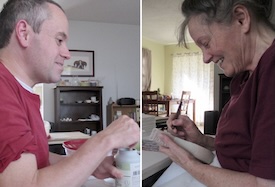
How it’s Made
Nerikomi - In Japanese, neri is a root word meaning "to mix". Komi means "to press into," as in pressing clay slabs into a mold. Nerikomi thus means to hand-build with colored clay, as in mold work. It has been expanded to include other methods of hand-building."
This "Red Flower Nerikomi Bowl" begins with colored porcelain that I color myself.
Small millefiori flowers and murrine were formed into canes about 1-1/2" long.
(Murrine are colored patterns or images made in a cane that are revealed when the cane is cut into thin cross-sections. One familiar style is the flower shape. The flower shape is called millefiori.)
Each small murrine and millefiori piece is laid into a bisqueware mold that I form on the potter's wheel from porcelain clay, then bisque fire (1945ºF). The sections are "glued" together using porcelain slip. (wet, colored porcelain clay)
When the design is dry enough to be handled, it's pulled out of the mold and allowed to thoroughly dry under plastic.
The Nerikomi piece is sanded with 100 grit sandpaper, then 220 grit sandpaper.
The piece is signed and bisque fired, then sanded and/or wet sanded again, and into the kiln for its final firing. (2232ºF)
Nerikomi is, in my opinion, the MOST DIFFICULT colored porcelain clay technique. This entire process is labor intensive, and cracks can appear at any stage of creativity.
When Nerikomi pieces are successful, it is with great appreciation, and never do I take Nerikomi success for granted.
I am continually discovering new ways to produce successful Nerikomi pieces.
The look of a Nerikomi piece of pottery is so different from glazed ware, as the color is embedded into the clay; the design appears on both sides of the pottery piece.
Shop Policies
Processing Time:
Weather permitting, we ship between 1 to 3 business days from your order date.
Shipping Rate:
$5. Flat rate United States. I prefer to ship our pottery Priority Mail with tracking number.
Return Policy:
You may return your pottery to us within 14 days of its tracking number delivery. Customer is responsible for return shipping charges.
Shipping Pottery: When packing your pottery for shipping, I will always pad the box with plastic pillows, and recycled newspaper. Each item is wrapped in bubble wrap.
Care Instructions:
Most of our pottery is dishwasher, microwave and oven safe (up to 400ºF), however it is always best to handwash handmade pottery, especially if there is delicate carving on the vessel.
For oven use, we recommend placing in a cold oven and heating to 400°F maximum. Especially important is do not place it over an open flame or stove top. DO NOT place a frozen dish directly in the oven because it will cause an extreme temperature change and may crack the vessel.
My son, Dennis, and I want you to be happy with your pottery purchase from our home based pottery studio, here in North Carolina.
We are not production potters, and do not normally create more than two items that might resemble each other in appearance. All of our pottery is one of a kind, and not duplicated.
We do not accept custom orders at this time. HOWEVER, if there is something you'd like to see in our inventory, such as a particular flower or color, or color combination, it can be inspiring to our creative process.
